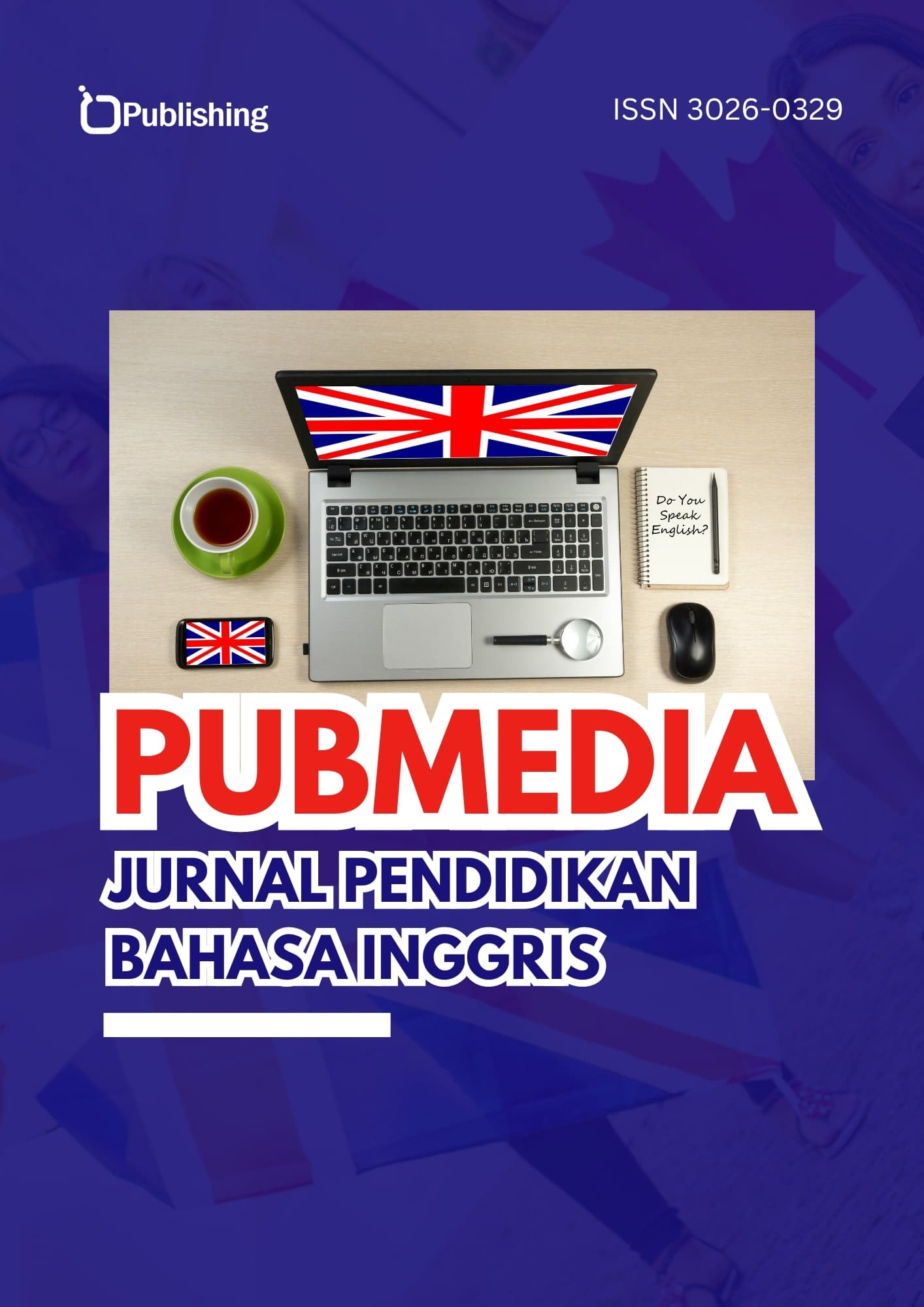Integration of Culturally-Responsive Teaching in English Learning
DOI:
https://doi.org/10.47134/jpbi.v1i1.17Keywords:
culture responsive teaching, new paradigm, English educationAbstract
This article explores the integration of culture-responsive teaching in English learning within the context of the new paradigm in education. As education systems become increasingly diverse and multicultural, there is a growing recognition of the importance of incorporating students' cultural backgrounds and experiences into the learning process. The new paradigm in education emphasizes a student-centered approach, where the focus is on promoting inclusivity, equity, and cultural competence in the classroom. Through a qualitative research design, this study examines the implementation of culture-responsive teaching in English language classrooms in a secondary school setting. Data were collected through classroom observations and interviews with teachers. The research aimed to understand how culture-responsive teaching practices are incorporated into English language instruction and the impact on student engagement and language proficiency. The findings indicate that the integration of culture-responsive teaching in English learning enhances student motivation and fosters a positive learning environment. By incorporating culturally relevant content and instructional strategies, teachers can create meaningful connections between students' cultural backgrounds and the language they are learning. This approach promotes a deeper understanding of language concepts and fosters a sense of belonging among students from diverse cultural backgrounds.
References
Baker, T., & Nelson, R. E. (2005). Creating Something from Nothing: Resource Construction through Entrepreneurial Bricolage. Administrative Science Quarterly, 50(3), 329–366. https://doi.org/10.2189/asqu.2005.50.3.329 DOI: https://doi.org/10.2189/asqu.2005.50.3.329
Barton, G. (2022). Culturally responsive and meaningful music education: Multimodality, meaning-making, and communication in diverse learning contexts. Research Studies in Music Education, 44(2), 345–362. https://doi.org/10.1177/1321103X211009323 DOI: https://doi.org/10.1177/1321103X211009323
Brdarić, H., & Juraj, J. (n.d.). The Importance of Teaching Culture in the Foreign Language Classroom. https://urn.nsk.hr/urn:nbn:hr:142:727491
Creswell, J. W. (2013). Educational research: Planning, conducting, and evaluating quantitative and qualitative research. Psychology, Vol.4 No.3A, 3–12.
Cruz, R. A. (2020). An Examination of Teachers’ Culturally Responsive Teaching Self-Efficacy. Teacher Education and Special Education, 43(3), 197–214. https://doi.org/10.1177/0888406419875194. DOI: https://doi.org/10.1177/0888406419875194
Hamline, D., & Taylor, A. (2020). INTEGRATING CULTURALLY RELEVANT TEACHING STRATEGIES: INTEGRATING CULTURALLY RELEVANT TEACHING STRATEGIES: PROFESSIONAL DEVELOPMENT FOR ELEMENTARY CLASSROOM PROFESSIONAL DEVELOPMENT FOR ELEMENTARY CLASSROOM TEACHERS TEACHERS. https://digitalcommons.hamline.edu/hse_cp
Ettekal, A. V. (2020). The Complexities of Culturally Responsive Organized Activities: Latino Parents’ and Adolescents’ Perspectives. Journal of Adolescent Research, 35(3), 395–426. https://doi.org/10.1177/0743558419864022 DOI: https://doi.org/10.1177/0743558419864022
Gülteke, M., Tomul, E., & Korur, F. (2013). Mathematics Special Content Competencies of Elementary School Teachers. Creative Education, 04(12), 1–10. https://doi.org/10.4236/ce.2013.412A2001 DOI: https://doi.org/10.4236/ce.2013.412A2001
Gustiwi, Y. (2017). Studi Tentang Penerapan Culturally Responsive Teaching untuk Mengembangkan Soft Skills Siswa pada Materi Larutan Elektrolit Dan Redoks. . Universitas Negeri Jakarta.
Irizarry, J. G., & Antrop-González, R. (2008). RicanStructing the Discourse and Promoting School Success: Extending a Theory of Culturally Responsive Pedagogy for DiaspoRicans. Hispanic Health Care International, 6(4), 172–184. https://doi.org/10.1891/1540-4153.6.4.172 DOI: https://doi.org/10.1891/1540-4153.6.4.172
Kramsch, C. (2017). Cultura no ensino de língua estrangeira. Bakhtiniana: Revista de Estudos Do Discurso, 12(3), 134–152. https://doi.org/10.1590/2176-457333606 DOI: https://doi.org/10.1590/2176-457333606
Matthews, J. S. (2019). Speaking their language: The role of cultural content integration and heritage language for academic achievement among Latino children. Contemporary Educational Psychology, 57, 72–86. https://doi.org/10.1016/j.cedpsych.2018.01.005 DOI: https://doi.org/10.1016/j.cedpsych.2018.01.005
Ndandara, A., & Hambandima, E. S. N. (2021). AN APPLICATION OF A CULTURALLY RESPONSIVE TEACHING (CRT) APPROACH TO DRAMA TEACHING BASED ON LOCAL WISDOM: A STUDY AMIDST THE NEW NORMAL CONDITION OF THE COVID-19 PANDEMIC. Lire Journal (Journal of Linguistics and Literature. https://doi.org/10.33019/lire.v3i DOI: https://doi.org/10.33019/lire.v5i1.99
Ng, C. S. M. (2022). Hong Kong preschool teachers’ utilization of culturally responsive teaching to teach Chinese to ethnic minority students: a qualitative exploration. Asia Pacific Journal of Education, 42(4), 641–660. https://doi.org/10.1080/02188791.2021.1873102 DOI: https://doi.org/10.1080/02188791.2021.1873102
Sastrapraja, A. R. (n.d.). Empowering Students’ Chemistry Learning: The Integration of Ethnochemistry in Culturally Responsive Teaching. https://www.researchgate.net/publication/321870631
Stec, M. (2014). Reflective Teaching in an English Primary Classroom (pp. 61–70). https://doi.org/10.1007/978-3-319-08353-7_5 DOI: https://doi.org/10.1007/978-3-319-08353-7_5
Suryani, A., Soedarso, S., Diani, K. T., & Rosmawati, R. (2020). ENGLISH TEACHING IN SOCIAL AND CULTURAL CONTEXTS: LANGUAGE TEACHERS AS CULTURAL MANAGERS. LLT Journal: A Journal on Language and Language Teaching, 23(2), 273–292. https://doi.org/10.24071/llt.v23i2.2470 DOI: https://doi.org/10.24071/llt.v23i2.2470
Thomassen, W. E. (2020). A Norwegian perspective: Student teachers’ orientations towards cultural and linguistic diversity in schools. Teaching and Teacher Education, 96. https://doi.org/10.1016/j.tate.2020.103151 DOI: https://doi.org/10.1016/j.tate.2020.103151
Downloads
Published
How to Cite
Issue
Section
License
Copyright (c) 2023 Shinta Yuliantari, Tanzil Huda

This work is licensed under a Creative Commons Attribution 4.0 International License.










